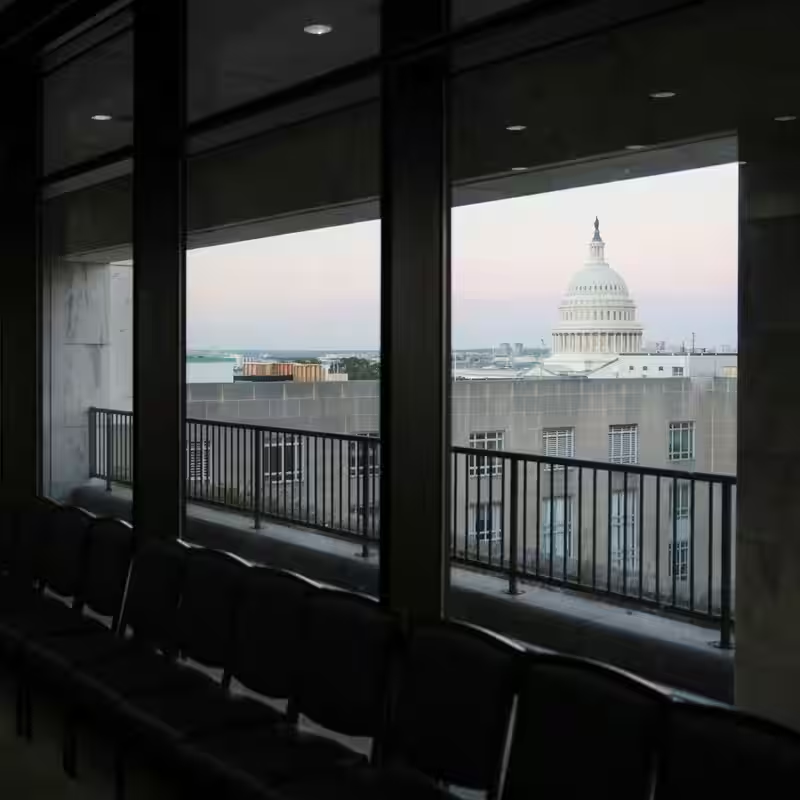Table of Contents
- Economic Impact Beyond Paychecks
- Businesses Feel the Squeeze
- Critical Data Goes Dark
- Human Cost Mounts
- Long-Term Risks Loom
- Sources
Government Shutdown Scars: Hidden Economic Damage Deepens
As the U.S. federal government shutdown stretches into its fourth week with no resolution in sight, economists and business leaders are warning that this isn’t just another temporary pause—it could leave lasting scars on the American economy.
Unlike past shutdowns that caused short-term blips followed by quick rebounds, this one is different. No appropriations bills have passed, and the White House is threatening to withhold back pay for furloughed workers—despite a 2019 law requiring it. “That would obviously make it a larger macroeconomic impact,” said Michael Zdinak of S&P Global Market Intelligence.
According to Oxford Economics, each week of the shutdown trims 0.1 to 0.2 percentage points off annual GDP growth—translating to $7.6 billion to $15.2 billion in lost output weekly.
Businesses Feel the Squeeze
For companies like HeiTech Services in Maryland, the shutdown isn’t abstract—it’s existential. Owner Brandon Muniz has already laid off 15 employees and furloughed 25 more due to halted visa processing, a service his firm supports under federal contract.
“All of our indirect costs… we still have to pay for,” Muniz said. “It’s very difficult to factor in something like a shutdown.”
His clients—farmers, seafood processors, and seasonal attraction operators—are stuck in limbo, unable to bring in foreign workers critical to their operations. “Even a short shutdown gums up the works for months,” said immigration attorney Mark Neuberger.
Meanwhile, federal loan programs from the Small Business Administration and Department of Agriculture have ground to a halt. Rural homebuyers and disaster-area residents can’t access flood insurance or affordable credit, forcing many toward high-interest alternatives.
Critical Data Goes Dark
October is a pivotal month for economic planning—especially in agriculture. But with statistical agencies shuttered, vital reports like the USDA’s weekly crop and demand updates are missing.
“Farmers are trying to make business plans… This is not a great time for the lack of information,” said Todd Davis, chief economist at the Indiana Farm Bureau.
Census field reps like Janet Lowry are also sidelined. Her monthly Survey of Construction—used by builders, appliance makers, and real estate analysts—is on hold. “October is blown,” she said.
Human Cost Mounts
The shutdown’s toll isn’t just economic—it’s deeply personal. In Virginia, which has already lost 10,000 federal jobs this year, employment is projected to contract for the first time since the Great Recession.
Food banks like the Capital Area Food Bank have opened special sites for unpaid federal workers. Meanwhile, charities like United Way face a double blow: fewer donations from furloughed workers who once gave through payroll campaigns—and now need help themselves.
“Now what do you do when someone who used to be your donor becomes a client?” asked United Way CEO Rosie Allen-Herring.
Long-Term Risks Loom
Beyond delayed permits and stalled research grants, the shutdown weakens America’s emergency response capacity. With hurricane season ongoing, the National Weather Service and FEMA are operating below capacity—raising the risk that small disasters escalate.
“You’re going to start to see those cascading impacts coming through,” warned David Bernstein, an emergency planning consultant.
And with the Federal Reserve flying blind—missing key labor and inflation data—monetary policy decisions could backfire once the full picture emerges.
Sources
The New York Times: Shutdown With No Clear End Poses New Economic Threat




